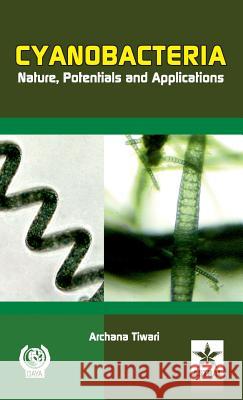Cyanobacteria Nature, Potentials and Applications » książka
Cyanobacteria Nature, Potentials and Applications
ISBN-13: 9789351300809 / Angielski / Twarda / 2014 / 256 str.
This book gives a view about the extraordinary features and enormous potentials of Cyanobacteria. They are excellent sources of biofuels- ranging from hydrogen to lipids. The antioxidative system is well developed to protect the damaging impact of free radicles. The antioxidatives enzymes of cyanobacteria- SOD, Catalase, Ascorbate Peroxidase etc. can be utilised for commercial purposes.
Antioxidative therapy is the new avenue in medical science.
The photosynthetic pigments- phycocyanin and phycoerythrin have great therapeutic value. The antimicrobial efficacy of cyanobacteria is quite wide. They are great reservoirs of diverse varieties of secondary metabolites. Antibacterial and antifungal capabilities are well reported and still in research. The toxins secreted by
cyanobacteria are diverse in nature ranging from hepatotoxins to lipopolysaccharides. The mode of action of toxins and the effect of these toxins is alarming, round the globe. These wonderful tiny factories need further exploration, so that their properties can be fully utilised. This book summarises various aspects of these wonderful microbes, and can be useful to graduate and post graduate students, researchers and academicians.
This book gives a view about the extraordinary features and enormous potentials of Cyanobacteria. They are excellent sources of biofuels- ranging from hydrogen to lipids. The antioxidative system is well developed to protect the damaging impact of free radicles. The antioxidatives enzymes of cyanobacteria- SOD, Catalase, Ascorbate Peroxidase etc. can be utilised for commercial purposes.
Antioxidative therapy is the new avenue in medical science.
The photosynthetic pigments- phycocyanin and phycoerythrin have great therapeutic value. The antimicrobial efficacy of cyanobacteria is quite wide. They are great reservoirs of diverse varieties of secondary metabolites. Antibacterial and antifungal capabilities are well reported and still in research. The toxins secreted by
cyanobacteria are diverse in nature ranging from hepatotoxins to lipopolysaccharides. The mode of action of toxins and the effect of these toxins is alarming, round the globe. These wonderful tiny factories need further exploration, so that their properties can be fully utilised. This book summarises various aspects of these wonderful microbes, and can be useful to graduate and post graduate students, researchers and academicians.











